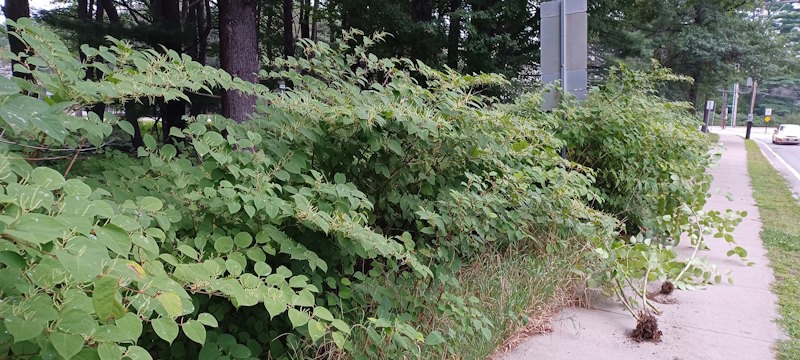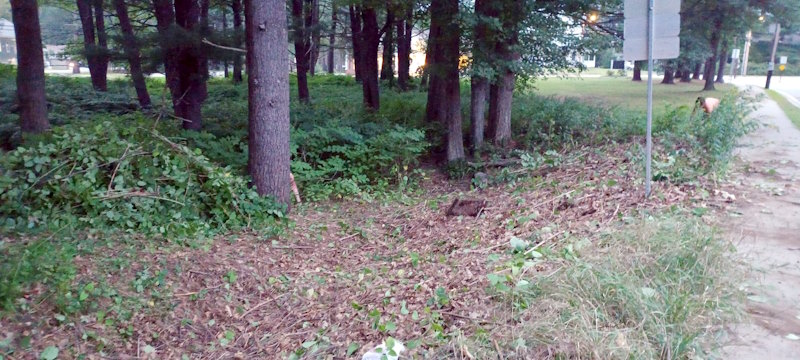It's late August and the Japanese knotweed is in bloom.
Japanese knotweed is an invasive plant originally from – you guessed it – Japan, that has taken over so many of our state’s roadside ditches, flood plains, and even city parks. It grows about six feet tall and, where it grows, it will push almost all the native vegetation out of its way.
Ladies’ Wildwood Park, in west Keene, is an example of a city park that has developed quite a knotweed infestation. This past Monday, through a program I’ve organized via the Keene Conservation Commission, a group of half a dozen of us volunteered to pull out as much of it as we could.
This time of year is a prime time for pulling out Japanese knotweed, because most of the plant’s energy and resources are above ground, in the stalks and leaves and blossoms of the plant, rather than in the roots. That means that pulling the plant up by its roots – and destroying the crown of the plant, where it keeps its energy reserves – is relatively easy as compared to earlier in the season.

Based on the before and after photos, shown to the side here, it sure looks like we took out a whole lot of Japanese knotweed. And we did! We took out a grove that was encroaching on the sidewalk, blocking the view of the park from the street, and threatening to envelop a new hillside.
Unfortunately, there is so much more of it out there. Realistically, a knotweed problem of the size currently in that park is likely best managed by professionals using herbicides. The methods our group uses are a bit more soft touch, ecologically speaking.

We pull out the knotweed with the understanding that it will grow back, and that we are going to have to revisit the spot regularly for the next several years to continue pulling it out. All the while, we encourage other species, like sumac and milkweed, to take its place. Once the native plants can recover a foothold, its easier to make sure that the knotweed is, if not eradicated, at least far less of a nuisance.
This is what we have been doing in other spots in the city – Robin Hood Park and Woodland Cemetery, for example – and we are seeing these these areas on their way to recovery.
-----
If you have a Japanese knotweed problem on your property and would like to read more about what to do, this publication by the New Hampshire Department of Agriculture will give you some ideas on where to start.

